A Conversation With Robert Persons (GENERAL ORDERS NO. 9)
Before General Orders No. 9, Robert Persons had never made a film. His first foray into the land of cinema is a mesmerizing experience, a 71-minute reflection upon his home state of Georgia and the somber evolution of a quieter, greener, more gentle America into the loud, cement-highwayed 21st century. It’s hard to experience Persons’ film and not make an immediate connection to the work of Terrence Malick, yet as I tweeted after seeing it for the first time at the 2010 Sarasota Film Festival, General Orders No. 9 makes Malick look like a straight shot of Hollywood. Experimental, dense, and poetic, Persons’ film casts a truly hypnotic spell. Back in April 2010, I sat down with Persons while he waited to do a Q&A after one of his SFF screenings to discuss his awakening as a filmmaker and how he managed to bring this startlingly distinct film to life. (NOTE: The film is now available VOD, on DVD through the official website, and will also be made available for purchase on DVD and Blu-ray at Amazon through Passion River Films on March 20th.)
HAMMER TO NAIL: I know a lot of filmmakers who prefer to let their work speak for itself. Watching the Q&A yesterday, it seemed like you had an aversion to answering some of those literal questions like “What did that water shot mean?” But you eventually gave in and explained yourself and proved that there was a reason. How do you balance that line between giving away too much yet not offending the person who wants this type of answer?
ROBERT PERSONS: I’m pretty conflicted about it. The first two festivals we had, I declined to do a Q&A, ‘cause I thought it was wrong. The movie works so hard to get the people in the room to a certain place, and then the idea of, “Okay, let’s meet the filmmakers!” I’d never been to a festival. I didn’t know. I just knew it didn’t feel right. So I declined to do them ’cause I thought, why spoil where they all are? After declining the two festivals, I felt like I was not doing the festival justice and not returning the favor to them, so I started doing them. Once, I actually sent up my editor instead of me. And then he was speaking for me or saying, “Well Bob did this,” or, “Bob did that,” and that made me angry. It didn’t feel right having someone else speak for me. I said I’m never doing that again. So I started doing them. I guess I started at Slamdance, and it went well. It felt like it went well. And also, what better place to start. The audience was a little more apt to ask good questions. So it went well and it felt good. And the few that I’ve done since then, they went well and felt good.
To your question in particular, there’s nothing to explain. Any explanation I give is only gonna devalue what I’ve done. You start hearing the particulars of where this came from or where that idea came from or what it meant to us while we were making it, that would just harm the freedom of what might happen for the viewer and how they take it. ‘Cause it’s certainly a film that’s designed to be a catalyst for opening questions, it’s like a kaleidoscope or something. There’s not a fixed path about what’s right and wrong about the film. It asks questions more than it answers them.
H2N: We were talking earlier about marketing and how to get your film out there and, like you said, festivals really like the interaction between filmmaker and festival attendee and a Q&A is the least you can do when they go to great lengths to make sure you’re there. But there has to be a balance where you feel like you’re not betraying your own instincts.
 BP: I had my own reasons for the things that I wanted in the film. I had my own reasons and, you know, they don’t even necessarily make sense to me. They were just impulses, things you love or images you’re crazy about or images that resonate for you. A lot of the film was about wanting to see these things together at one time. These things, I never see them in films, I wanna make my own film so I can see them presented together. So I had my own reasons for what I brought into the editing room, but then Phil [Walker, editor/producer] and I, to work together and to create a narrative that would enable him to know what to do next, we built up a narrative between the two of us, which was new, just for the purposes of doing the job. So we created this monk character who was speaking, and he’s talking about different aspects of his interior life, or there was some old man who grew up in the ‘40s and everything is seen through his eyes, and maybe there’s a waking from a nightmare, and various things that come in from the outside that are unexplained. So we invented all these kinds of stories that we wouldn’t want to tell anybody, but they were necessary for us to do the job. So then, in the experience of doing a Q&A, when someone asks me what does the title mean, I feel comfortable explaining why I chose the title. But explaining why I used a certain image of the ocean in a non-sequitor way at the end of a sequence… at the beginning of things, I was just saying, “This is a poetic and expressionistic production, and the images are just there to support a mood.” We were seeking to sustain a mood in the film and shift it into a different way in some other part of the film, and these are all just pieces holding it together and keeping it going.
BP: I had my own reasons for the things that I wanted in the film. I had my own reasons and, you know, they don’t even necessarily make sense to me. They were just impulses, things you love or images you’re crazy about or images that resonate for you. A lot of the film was about wanting to see these things together at one time. These things, I never see them in films, I wanna make my own film so I can see them presented together. So I had my own reasons for what I brought into the editing room, but then Phil [Walker, editor/producer] and I, to work together and to create a narrative that would enable him to know what to do next, we built up a narrative between the two of us, which was new, just for the purposes of doing the job. So we created this monk character who was speaking, and he’s talking about different aspects of his interior life, or there was some old man who grew up in the ‘40s and everything is seen through his eyes, and maybe there’s a waking from a nightmare, and various things that come in from the outside that are unexplained. So we invented all these kinds of stories that we wouldn’t want to tell anybody, but they were necessary for us to do the job. So then, in the experience of doing a Q&A, when someone asks me what does the title mean, I feel comfortable explaining why I chose the title. But explaining why I used a certain image of the ocean in a non-sequitor way at the end of a sequence… at the beginning of things, I was just saying, “This is a poetic and expressionistic production, and the images are just there to support a mood.” We were seeking to sustain a mood in the film and shift it into a different way in some other part of the film, and these are all just pieces holding it together and keeping it going.
H2N: I think that comes across. But that’s a perfectly fulfilling answer to that question. If someone asks you a literal, practical question and you answer that way, that can enlighten them a little bit, even if the answer they were originally seeking was more specific and concrete. It’s not like you’re being evasive or pretentious.
RP: Right. That’s part of what I’m trying to learn, and I’ve been asking for help about this a lot from people. ‘Cause my first instinct was to evade and say, “David Lynch doesn’t have to answer these questions. He explicitly will not answer these questions, ‘cause he is such a purist.” And I believe in what he believes so strongly. He’s such a purist, and he can afford to be that. But then I started learning that you can be respectful to people’s questions, and you can respond to people’s questions without betraying yourself by telling them more about what kind of project it was, and the sensibility in which different components were used. And so on.
H2N: Someone in the Q&A yesterday addressed you as a poet. As this is your first film, what creative background led you to this? Do you in fact have a poetry background?
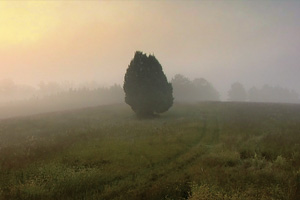 RP: When I first started learning things on my own and finding things I had passion for, it was poetry. And I started writing poetry. I wrote poetry for a long time, and studied poetry for a long time. I wasn’t doing it in school. I was a very poor student. I got kicked out of school, and skipped around at different colleges. But simultaneously I had a self-directed interest in things and taught myself. I just wanted to know more about certain things. The same happened with fiction. The same happened with film. But I wrote poems for a long time and didn’t do anything with them. I wasn’t a part of any community. There was no feedback loop or anything. A poem was a way of me capturing what I had learned to date, or if I came up with something all at once, it was my creative work. But I didn’t know what to do with it after that. And after a while courses began to feel insufficient and not very useful in the modern world, and all the poets I cared about, their work was really unreadable to anybody but someone who’d gone to school for too long. There were the small poetry journals and English professors… it just wasn’t… I had bigger plans, I wanted more than that.
RP: When I first started learning things on my own and finding things I had passion for, it was poetry. And I started writing poetry. I wrote poetry for a long time, and studied poetry for a long time. I wasn’t doing it in school. I was a very poor student. I got kicked out of school, and skipped around at different colleges. But simultaneously I had a self-directed interest in things and taught myself. I just wanted to know more about certain things. The same happened with fiction. The same happened with film. But I wrote poems for a long time and didn’t do anything with them. I wasn’t a part of any community. There was no feedback loop or anything. A poem was a way of me capturing what I had learned to date, or if I came up with something all at once, it was my creative work. But I didn’t know what to do with it after that. And after a while courses began to feel insufficient and not very useful in the modern world, and all the poets I cared about, their work was really unreadable to anybody but someone who’d gone to school for too long. There were the small poetry journals and English professors… it just wasn’t… I had bigger plans, I wanted more than that.
When I was a kid, I had kind of a visual talent and I did art and painting and drawing and stuff, and tried some of that after I was grown but didn’t have the discipline. Oil painting is really hard, and from the time I was about 18 to the time I was 28 I, like, forgot how to do it. I tried doing it but couldn’t. And then about that time I just started watching movies and started having experiences with movies that were better aesthetic experiences than I’d had with any of the other arts I’d been obsessed with. I said, “This is it.” Walker Percy’s a novelist that I focused on exclusively for years. He said if he had it to do all over again he would have been a filmmaker. And this other Southern author, James Agee, he’s partially known for his movie reviews and he was very good at it. But I think it was mainly discovering and being moved by certain films and getting obsessed with certain directors. At the same time, you still have all these things inside you that you have strong feelings about, or a need to make stuff. You can’t control the urge to want to make something beautiful. There are things about life that you love, and you want to do something that captures those things, memorialize something that you love ‘cause you feel like you’re supposed to.
H2N: For General Orders No. 9, was it on-the-job training? You didn’t work your way up the crew ranks, it was all a function of grabbing a camera to serve your emotion and instincts?
 RP: Right. It started with collecting shot ideas on paper, music ideas, and ideas for the voice-over, and ideas that I’m grabbing from other films. There was a point before I married where I had this office and this 17-foot long bulletin board along one wall of a bedroom I didn’t use. It’s crazy, it was all for naught. I must have learned something, but I spent a good bit of time arranging index cards on that bulletin board trying to take what I wanted to be in one piece of art and make it work. So I had all these things I wanted to be in the film, each one was on an index card, and I started putting them in a linear form from left to right, and I messed around with that for too long. And maybe getting married and having kids was kinda like It’s Time To Produce. To stop waiting or stop pondering or overthinking things or including more and more. I think that helped to kick the project into higher gear. And even after that it still took a hell of a long time. So I said, “I’m gonna start shooting stuff by myself.” Part of the project idea was that I was gonna do it by myself. I’m uncomfortable around other people and I like to be alone and I’m so arrogant that I think I can do it by myself. [HTN laughs] And I’m gonna prove to everybody that you can make something beautiful by yourself here in the middle of Georgia. So I bought a camera, and I learned how to use the camera and I would go out. Then I bought a monitor and a matte box and a tripod and I would go out and shoot. It was a real easy camera to use. After a while, I started collecting a library of tape. And then, I really wanted to get the film done, but I realized I couldn’t get it all myself. I needed more help. So I got help, someone who would go around with me and help me get the shots, help me drive, help carry the gear.
RP: Right. It started with collecting shot ideas on paper, music ideas, and ideas for the voice-over, and ideas that I’m grabbing from other films. There was a point before I married where I had this office and this 17-foot long bulletin board along one wall of a bedroom I didn’t use. It’s crazy, it was all for naught. I must have learned something, but I spent a good bit of time arranging index cards on that bulletin board trying to take what I wanted to be in one piece of art and make it work. So I had all these things I wanted to be in the film, each one was on an index card, and I started putting them in a linear form from left to right, and I messed around with that for too long. And maybe getting married and having kids was kinda like It’s Time To Produce. To stop waiting or stop pondering or overthinking things or including more and more. I think that helped to kick the project into higher gear. And even after that it still took a hell of a long time. So I said, “I’m gonna start shooting stuff by myself.” Part of the project idea was that I was gonna do it by myself. I’m uncomfortable around other people and I like to be alone and I’m so arrogant that I think I can do it by myself. [HTN laughs] And I’m gonna prove to everybody that you can make something beautiful by yourself here in the middle of Georgia. So I bought a camera, and I learned how to use the camera and I would go out. Then I bought a monitor and a matte box and a tripod and I would go out and shoot. It was a real easy camera to use. After a while, I started collecting a library of tape. And then, I really wanted to get the film done, but I realized I couldn’t get it all myself. I needed more help. So I got help, someone who would go around with me and help me get the shots, help me drive, help carry the gear.
H2N: Was that a person who knew film production well?
RP: It was a guy I met in a Final Cut workshop I took about four years before this started. At one point, I was gonna learn Final Cut. I bought Final Cut 1, ya know. I’ve been on Mac for 15 or 20 years. So I was gonna learn that and do it myself. I went to the class, and it wasn’t anything, but I get this guy’s business card. And he was a guy that was in video production. So years later, when I realized I need someone else involved, I called him. His involvement at first was helping me with image acquisition. We spent a lot of time together, driving around and getting shots, and then some of the shot ideas were things that required more than just the two of us. It required complicated set-ups and people, and he at this point was a producer of documentary films for non-profits and commercial film work for businesses and non-profits in Atlanta, and had a lot of connections in Atlanta, so if we needed a shooter, he could get the people. He got a Steadicam guy one day, he got a guy with an HD camera one day, and we started doing the more complicated stuff. When we had most of the stuff we needed in the can, I hired him to be the editor, ‘cause he’s a one-man shop. So he moved into my office and started editing. We already had music to refer to, which the composer had made. And we had a structure, an outline. I had written a couple things. One was an essay that I wrote for him and for a couple other people—for the guy who was doing the animation, for the guy who was doing the music—it was an essay like, this is what I want the film to be. I had to get them into my world.
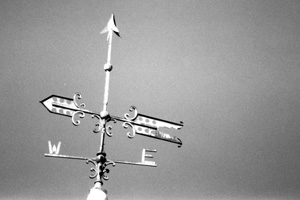 Then I made another huge bulletin board chart of the film. By this point, I had created what was gonna happen first, second, and third, so I had this big board. It was like a flow chart of the scenes. Each section had scenes and shots and ideas for music, and then what should be said at this time, and it was a three-act play, basically. It was pretty traditional. And that was on the wall of the office. So he started roughing out sections in a very intuitive way. He was a great person to have ‘cause he really believes in the creative process and he allowed things to develop. He wasn’t someone who said, “Give me the script, give me the tapes, and get out of here.” This wasn’t that kind of editing job. It was a very collaborative, pure creative process. His attitude about that kind of work was perfect for me at that time. He started building out things and it was time to start getting the voice-over done. I had a lot of stuff I knew was gonna be in the film voice-over-wise, but there was a point when I just stopped and I started writing, and I wrote it all. A lot of it was cannibalizing things I’d written ten years ago, and I was collecting all these things that were relevant to the voice-over, and I put it all in order. Much of it was fragmentary but grouped by subject or theme or mood or where it was going to appear in the film.
Then I made another huge bulletin board chart of the film. By this point, I had created what was gonna happen first, second, and third, so I had this big board. It was like a flow chart of the scenes. Each section had scenes and shots and ideas for music, and then what should be said at this time, and it was a three-act play, basically. It was pretty traditional. And that was on the wall of the office. So he started roughing out sections in a very intuitive way. He was a great person to have ‘cause he really believes in the creative process and he allowed things to develop. He wasn’t someone who said, “Give me the script, give me the tapes, and get out of here.” This wasn’t that kind of editing job. It was a very collaborative, pure creative process. His attitude about that kind of work was perfect for me at that time. He started building out things and it was time to start getting the voice-over done. I had a lot of stuff I knew was gonna be in the film voice-over-wise, but there was a point when I just stopped and I started writing, and I wrote it all. A lot of it was cannibalizing things I’d written ten years ago, and I was collecting all these things that were relevant to the voice-over, and I put it all in order. Much of it was fragmentary but grouped by subject or theme or mood or where it was going to appear in the film.
We brought my friend in from down the street, just an old college buddy [William Davidson], and I said his voice might work for our rough scratch voice-over. Because, again, the way we were working, we needed somebody’s voice reading the voice-over to have that element in Final Cut to continue doing the sculpting, of seeing how it feels when you use these words, this music, and this image, and he came in and read everything I wrote in the office, and we started. Maybe 20/30% of the things he read didn’t get used. We would drop things that didn’t ring true. And then we had a rough cut of the whole thing. I was open to the idea that someday we’d hire a professional voice talent. And I started listening to voice talent on the web through agencies…. “Toyota sell-a-thon!” So that was not right. [HTN laughs] And I realized, I needed an actor to play a part and read these things. But at this point, we liked his voice so much and he had done such a good job, that it stuck. So we ended up using him, re-recording him under better circumstances, and he’s the narrator in the film and it’s perfect. I enjoyed a friend being involved. He’s a writer and he knows how sentences work, how poetry is read and he was able to do it properly.
H2N: In getting back to that essay you wrote, how did you explain to these people what you wanted this film to be, especially for such a meditative, difficult to describe tone? Were you also playing music, showing films?
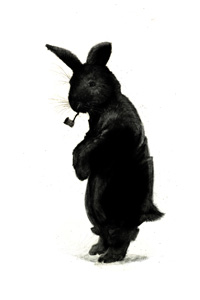 RP: I wrote the essay—you might wanna read that for fun, it’s kind of a hoot—and parts of it are kind of embarrassing, parts of it are interesting and good to read. There’s more intention behind the film than ended up present in the film. Then I made this collection of CDs, 15 discs, where I had like six or eight tunes on one CD, and made an index. I’d go like, “These are references for our drone sections.” Like Eno stuff, in that area. Then I wanted this bombastic, circus-type section, and I brought in this cut from Neutral Milk Hotel. And then all this old time country string music, and bluegrass. And a lot of that was for naught. But it was just me trying to communicate my values about music that might be good for the composer to know about as I was directing him.
RP: I wrote the essay—you might wanna read that for fun, it’s kind of a hoot—and parts of it are kind of embarrassing, parts of it are interesting and good to read. There’s more intention behind the film than ended up present in the film. Then I made this collection of CDs, 15 discs, where I had like six or eight tunes on one CD, and made an index. I’d go like, “These are references for our drone sections.” Like Eno stuff, in that area. Then I wanted this bombastic, circus-type section, and I brought in this cut from Neutral Milk Hotel. And then all this old time country string music, and bluegrass. And a lot of that was for naught. But it was just me trying to communicate my values about music that might be good for the composer to know about as I was directing him.
Then there were all the images. A lot of the stuff that’s non-video, I had that to show them, ‘cause I collect maps, and I collect stuff from typographical history and old ancient books. I had a lot of this stuff with me ‘cause I just collect it. So I was able to show them that. I’d bring them in and like just put on a show. And it was pretty… it was kinda like, I’m just gonna do this whether they think I’m crazy or not, and they went for it! Everyone went for it.
H2N: Did you have any situation where you just knew the person was not getting it.
RP: I interviewed an animator, a guy that did motion graphics work commercially in Atlanta, and he was just kind of, “When do you get to the part where it is you can tell me what you want me to do.” This other guy was maybe older and had an art background himself, and he was just intrigued from the beginning. So when I was able to freely spiel about the vision, and did a good job of it, it usually got people. It continues to get people. So as bizarre as the project is, as hard as it is, as uncommercial as it is, as much of a pea under the mattress of things, or whatever—hard to categorize—the project has been able to find the people it needs the whole time. I don’t know why. That’s become something I can count on. It helps me out. It will find the people it needs and it does. It has so far.
— Michael Tully







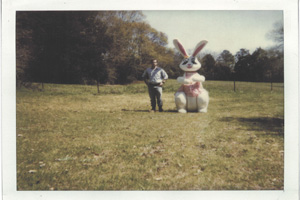

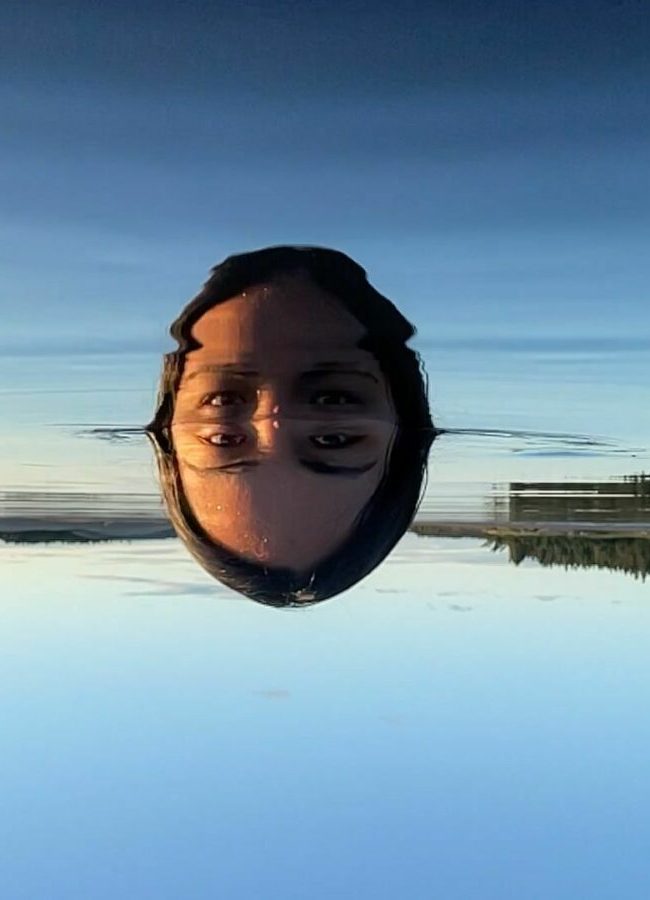
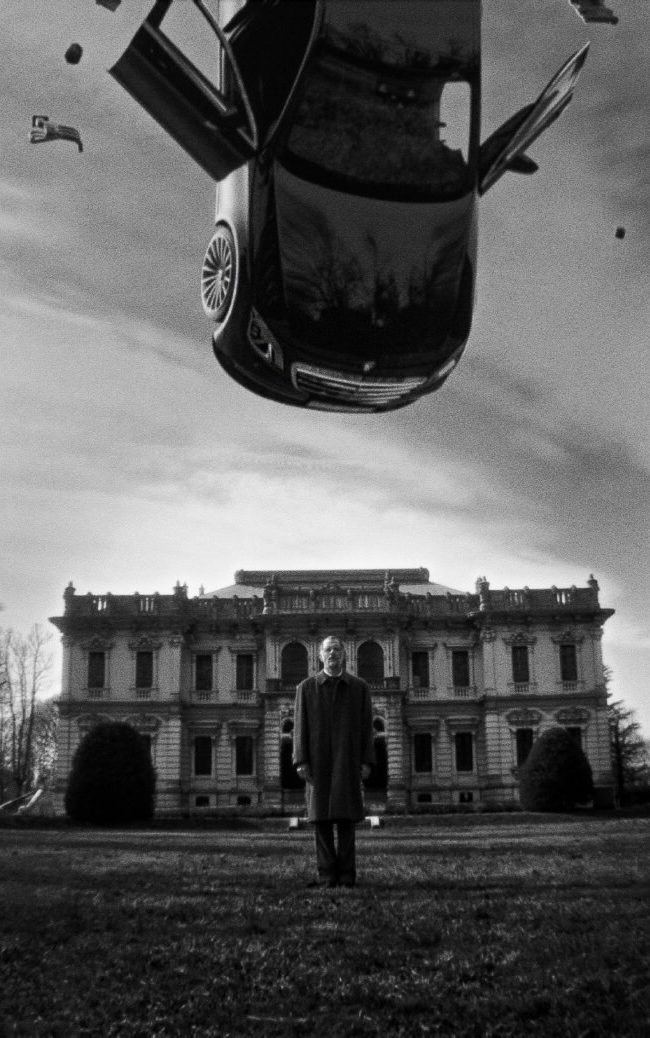


Pingback: FILMMAKER MAGAZINE PICK OF THE WEEK: GENERAL ORDERS NO. 9 – Hammer to Nail